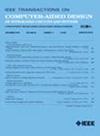近期量子模拟的连接感知合成和面向pauli的量子位映射
IF 2.9
3区 计算机科学
Q2 COMPUTER SCIENCE, HARDWARE & ARCHITECTURE
IEEE Transactions on Computer-Aided Design of Integrated Circuits and Systems
Pub Date : 2024-12-02
DOI:10.1109/TCAD.2024.3509794
引用次数: 0
摘要
量子模拟是许多算法设计的基础,这些算法共享被称为量子模拟核的子程序。优化这些核的编译是至关重要的,涉及两个关键组件:1)电路合成和2)量子位映射。然而,现有的电路合成方法要么忽略了量子比特连接约束(qcc),要么优先考虑最小化门数而不是优化电路深度。同样,目前的量子比特映射技术也不能很好地与电路合成方法一起工作。为了解决这些限制,我们提出了paullifforest,它包括一个连接感知电路合成算法和一个面向pauli的量子位映射算法。综合算法采用启发式策略生成较浅的电路,而量子比特映射算法与电路综合过程无缝协作。与最先进的Paulihedral编译器相比,我们的方法显着减少了CNOT门计数(减少13%)和电路深度(减少25%)。在噪声模拟器和真实超导量子计算机上的实验表明,与保利面体相比,该算法可以提高量子电路执行的保真度。本文章由计算机程序翻译,如有差异,请以英文原文为准。
PauliForest: Connectivity-Aware Synthesis and Pauli-Oriented Qubit Mapping for Near-Term Quantum Simulation
Quantum simulation is the foundation for the design of many algorithms which share subroutines known as quantum simulation kernels. Optimizing the compilation of these kernels is crucial, involving two key components: 1) circuit synthesis and 2) qubit mapping. However, existing circuit synthesis methods either overlook qubit connectivity constraints (QCCs) or prioritize minimizing gate count over optimizing circuit depth. Similarly, current qubit mapping techniques do not work well with circuit synthesis methods. To address these limitations, we propose PauliForest, which comprises a connectivity-aware circuit synthesis algorithm and a Pauli-oriented qubit mapping algorithm. The synthesis algorithm employs heuristic strategies to generate shallower circuits, while the qubit mapping algorithm seamlessly collaborates with the circuit synthesis process. Compared to the state-of-the-art Paulihedral compiler, our approach significantly reduces both CNOT gate counts (by 13%) and circuit depths (by 25%). Experiments on a noisy simulator and a real superconducting quantum computer show that our algorithm can improve the fidelity of quantum circuit execution compared to Paulihedral.
求助全文
通过发布文献求助,成功后即可免费获取论文全文。
去求助
来源期刊
CiteScore
5.60
自引率
13.80%
发文量
500
审稿时长
7 months
期刊介绍:
The purpose of this Transactions is to publish papers of interest to individuals in the area of computer-aided design of integrated circuits and systems composed of analog, digital, mixed-signal, optical, or microwave components. The aids include methods, models, algorithms, and man-machine interfaces for system-level, physical and logical design including: planning, synthesis, partitioning, modeling, simulation, layout, verification, testing, hardware-software co-design and documentation of integrated circuit and system designs of all complexities. Design tools and techniques for evaluating and designing integrated circuits and systems for metrics such as performance, power, reliability, testability, and security are a focus.

 求助内容:
求助内容: 应助结果提醒方式:
应助结果提醒方式:


